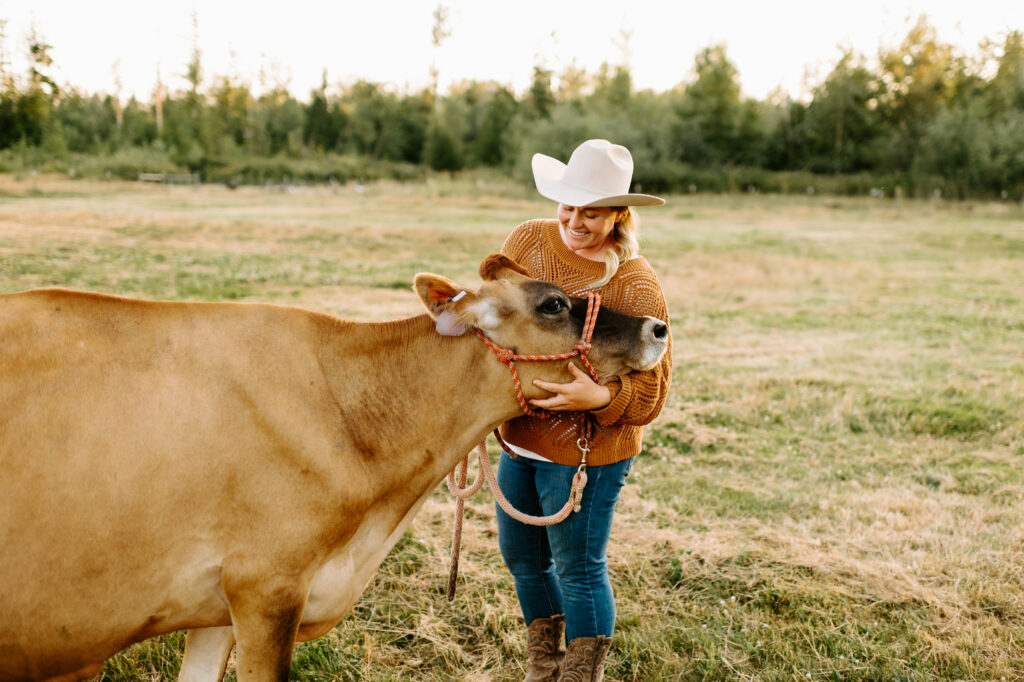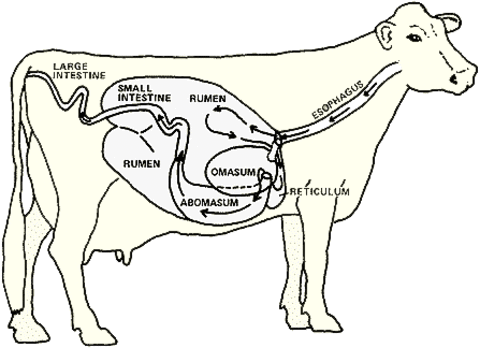
It never ceases to amaze me how our dairy cows are able to break down plant material in the form of grasses and other forages into rich, delicious milk that feeds their calves, us, our customers, bottle lambs, the list goes on. It’s all thanks to the anatomy of their digestive system which is unique to the group of animals they belong to, called ruminants.
What Is a Ruminant?

In simple terms, a ruminant is an organism that has multiple stomach compartments that help with digestion, four to be exact. These include the rumen, the reticulum, the omasum and the abomasum. Cows, sheep and goats are all ruminants. The word ruminant comes from the rumen, or the paunch, which is the largest of the compartments and stores and starts to ferment the feed after it’s been eaten in preparation for digestion. If you’ve ever seen a cow or sheep chewing their cud then you’ve observed them ruminating, or helping to further break down feed so it can be digested.
Because of their excellent ability to digest roughage, ruminants are fed primarily grasses, i.e pasture and hay. In the case of our cattle, we do also provide an additional supplement of barley (a grain that’s part of the grass family) for finishing to increase intramuscular fat deposits which in turn creates marbling and a depth of flavor in the meat.
What Is a Monogastric?

While ruminants have stomachs with multiple compartments, monogastric organisms have simple stomachs that only have one compartment. Examples of monogastric organisms include pigs, chickens, and humans.
When monogastric organism chew and swallow their food, it flows directly to the stomach where it begins to break down and then eventually absorbed. Because they lack multiple stomach compartments that can ferment the roughage before being digested, monogastrics don’t primarly feed on grass like ruminants do. The main components of their diet are grains and seeds – in the case of both our chickens and pigs they are kept on pasture in order to root around for grubs and other types of forage like non-native blackberry bushes, which the pigs absolutely love!
Understanding the differences between monogastrics and ruminants has allowed us to raise our livestock with the utmost care and attention in a way that also creates a superior product down the line for our customers. It’s a win win!
PLEASE COMMENT BELOW